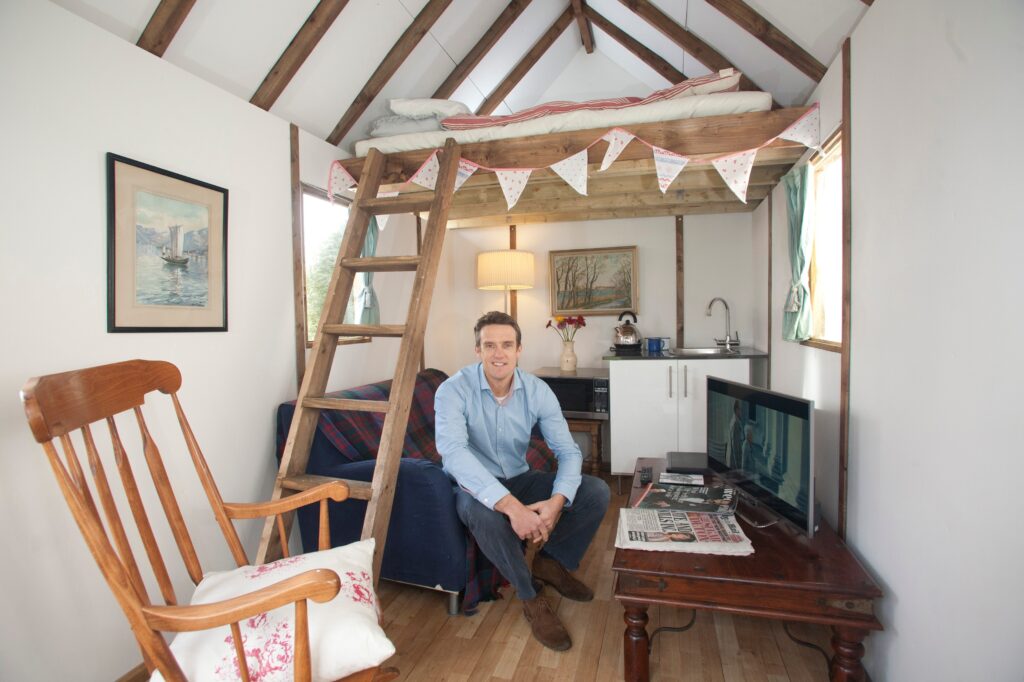Backpacking in New Zealand: adventure activities hit new heights
1. Why did the writer go to New Zealand?
2. Who is the typical backpacker in search of adventures?
3. What is the newest experience New Zealand offers?
4. Why was skydiving a problem for the writer?
5. How does he feel now about the skydive and why?
New Zealand is perfect for thrill-seeking backpackers, and a new range of backpacking adventures will see you flying, falling, jumping, spinning and floating … all in the name of fun.
I didn’t take a gap year, but I have heard plenty of stories about doing something reckless in search of a rush, and New Zealand caters to such whims in all sorts of ways, from skydiving to bungee jumping to that strange practice of mimicking a giant gerbil in a plastic ball, called "zorbing". I spent some days travelling with the Stray Travel tour, a hop-on, hop-off mini-coach service, which meanders up and down the country collecting and losing backpackers along the way. It’s relatively cheap, so perfect for those on a budget, and the sheer variety of its travellers was staggering: from European to American to Asian, from student to professional, from 21 to 40, it was an amiable jumble that overturned my preconception of the uni-lad gap-year cliche.
The newest experience is a forward-thinking combination of eco-tourism and old-fashioned thrills. Rotorua Canopy Tours are billed as a native forest canopy zipline tour, which is a wordy way of saying that you fly through the trees like a tui, though with panicked screaming taking the place of beautiful birdsong. The full circuit lasts for around three hours, and kicks off with a short walk through the Mamaku plateau forest, during which time the guides explain what they’re all about, which is mostly conservation of native bird species, which are perpetually under threat from non-native mammals such as rats, stoats and possums.
After the short walk-and-talk, it’s time to jump off something, as, it seems, is often the way in this country. In this instance the "flying fox" experience involves zipwiring between a series of wooden platforms at increasing heights, and across increasing widths, though this is a relatively gentle experience, at least until the final jump. "We’ve got a surprise for you," our guide (and Canopy Tours founder) James Fitzgerald grinned, before hoisting me into the unknown. About halfway across that final ride, the floor of the forest suddenly drops away, and it feels as if you’re hundreds of feet in the air, dangling from a cable, soaring through the tops of the trees.
By this point, I was confident that I could conquer my fears on a near-professional level. I’m not scared of heights (hence all the jumping) but for a long time I was terrified of planes, and it took a fear-of-flying course and a lot of determination to get me anywhere near one. Though I’m almost cured, I still get the occasional flash of nerves, so naturally I decided a skydive might be the thing to knock it on the head once and for all. As we flew to 5,000m above the Abel Tasman national park , I was not so sure about this self-prescribed therapeutic experience, but, as they say, there’s only one way down. So, I got strapped to my jump partner Chris and we tumbled out of the door and fell through the air for 70 of the longest seconds of my life.
"You can relax now – the parachute’s opened so that’s good," he said, with typical Kiwi understatement. It wasn’t just the biggest buzz of the fortnight – it was the most thrilling experience of my life. I was high on it for the rest of the trip. Even now, when something feels insurmountable, I remember how it felt to sit near the exit of a tiny plane and see the North and South Islands thousands of feet below.
www.guardian.co.uk
——————————————————————–
Answers:
1. He went backpacking on an adventure holiday because New Zealand has great opportunities to go bungee jumping, skydiving or zorbing.
2. No typical backpacker, he met Europeans, Asians and Americans, students and professionals, between ages 21 and 40.
3. It is a combination of eco-tourism and old fashioned thrills: it is a zipwire in the top of the trees and you can learn about native wildlife.
4. Not because he is afraid of heights but because he used to be afraid of planes and hat to take a fear-of-flying course to overcome it.
5. It was the most thrilling experience of his life as it helps him to overcome any big difficulties because it can’t be worse than sitting near the exit of that tiny plane.







